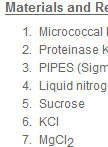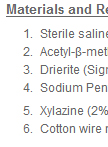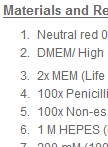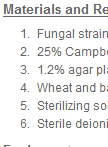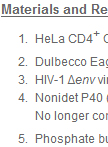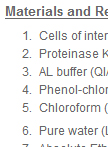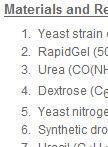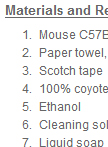往期刊物2013
卷册: 3, 期号: 7
细胞生物学
Micrococcal Nuclease (MNase) Assay of Arabidopsis thaliana Nuclei
微球菌核酸酶(Mnase)试验分析拟南芥染色质结构
免疫学
Allergen Sensitization and Challenge to Ovalbumin
利用卵清蛋白刺激构建致敏模型
Measurement of Airway Responsiveness in the Anesthetized Mouse
测定麻醉后小鼠的气道反应性
微生物学
Neutral Red Assay for Murine Norovirus Replication and Detection in a Mouse
采用中性红试验法进行小鼠诺如病毒增殖和检测
Fusarium Virulence Assay on Wheat and Barley Seedlings
小麦和大麦幼苗的抗镰刀菌毒性试验
HIV-1 Single Cycle Infection
HIV-1单循环感染
Quantification of HIV-1 DNA
HIV-1 DNA的量化
分子生物学
Northern Blot of tRNA in Yeast
酵母tRNA的Northern印记杂交实验
Western Analysis of Histone Modifications (Aspergillus nidulans)
Western检测组蛋白(巢状曲霉)的修饰
Metabolic Labeling of Yeast RNA with Radioactive Uracil
同位素示踪法进行酵母RNA的代谢标记
神经科学
Fear Conditioning Assay in Mouse
小鼠恐惧条件反射试验
植物科学
Northwestern Blot of Protein-RNA Interaction from Young Rice Panicles
RNA-蛋白质印记法研究水稻幼穗中蛋白质-RNA的相互作用


